The diversity of Donana’s ecosystems
Between sand and the smell of salt there’s a very particular place; This place is called Donana. A unique place from different aspects, today we are going to talk about:
The diversity of Donana’s ecosystems.
The diversity of Donana’s ecosystems has always been changing; Donana has been different a long the time and the Donana that we know today has only been with us for approximately 6000 years. In geological time it does not even reach the blink of an eye, but in those 6000 years the ecosystems have been formed as we know them today.
The first ecosystem of Donana is the best known and currently used by people, if you think of the beach…
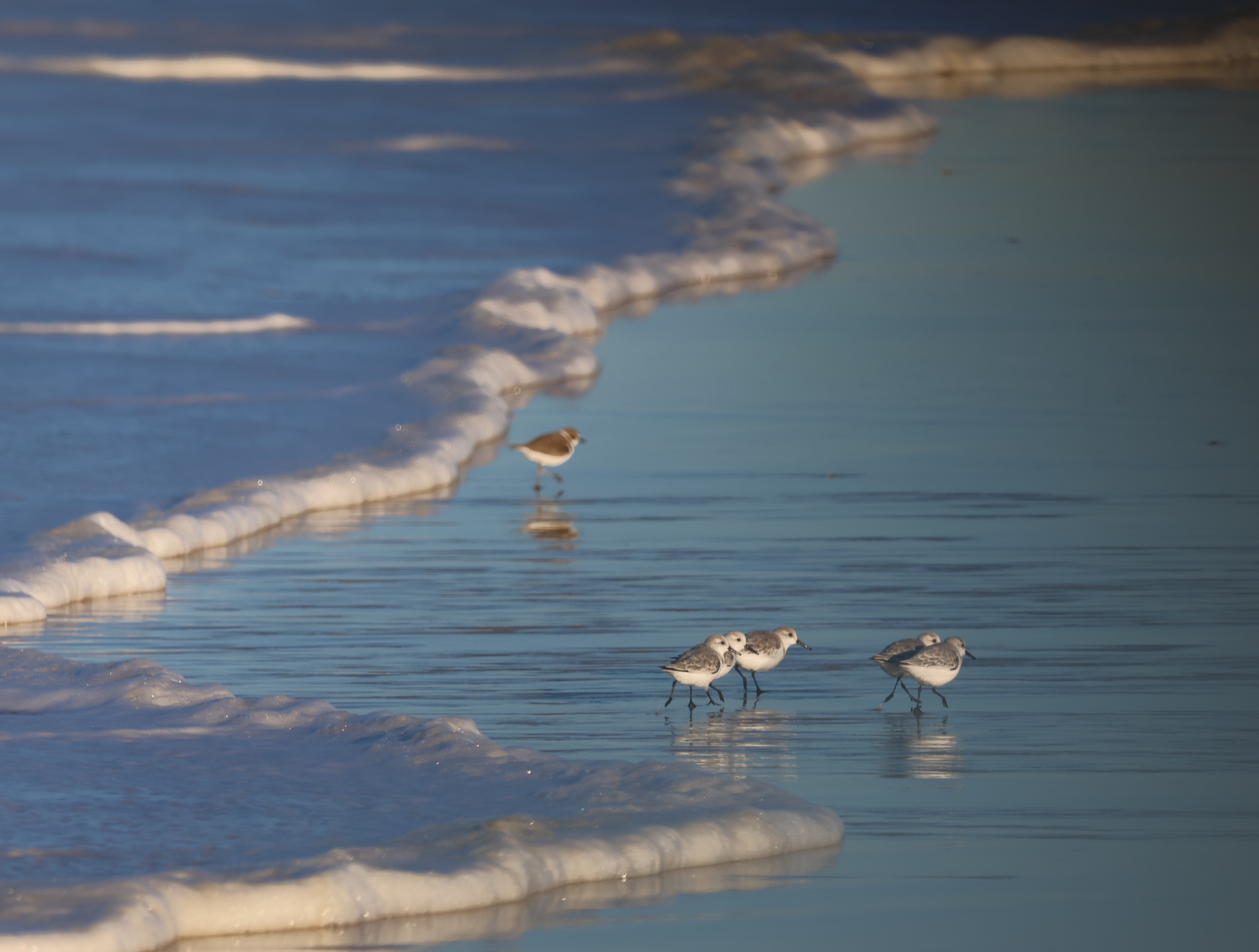
Sanderling Calidris alba on Donana’s beach.
Correct!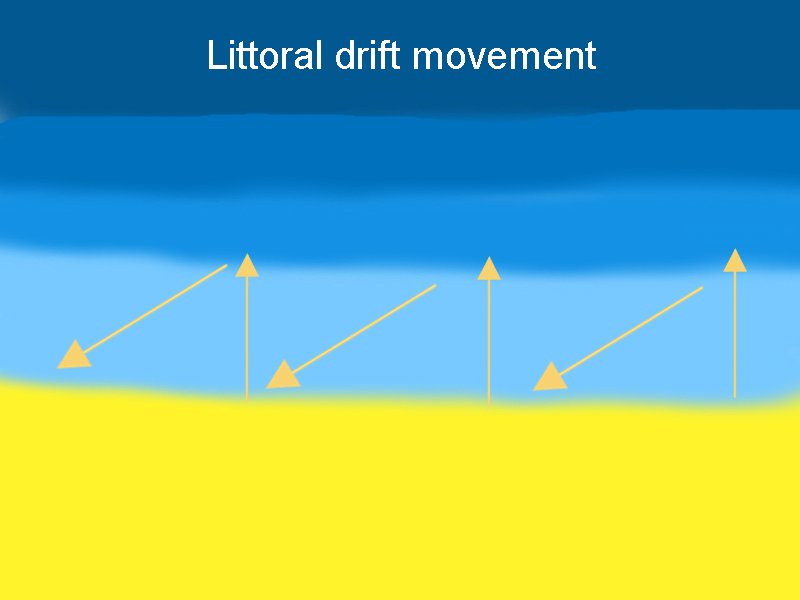
It is an ecosystem in continuous change due to the action of wind and waves; sometimes with progradation (advance) and other times with retrogradation (retreat) of the coastline.
But… How is this possible?
The wind and waves move the grains of sand (littoral drift movement) molding the coastline with each storm.
Later, at the upper limit of the high tide, remains of bivalves (shells) and remains of fish can be found. The latter can be eaten by gulls (yellowlegs, black-backed gulls, etc.), also, sandpipers are usually found at this limit eating the small invertebrates. The next thing we can find are the embryonic dunes, those are in the upper limit of our ecosystem and in them we find the bravest vegetation, as it fights against the wind that hits the coast and the saline spray that is in the environment. It’s not a super power but you have to be able to. And how she does it? Using adaptations like deep roots, in the case of the marram grass Ammophila arenaria, and other types of adaptations such as coastal bugloss Equium gaditanum, sea holly Eryngium maritimum, sea daffodil Pancratium maritimum and others.
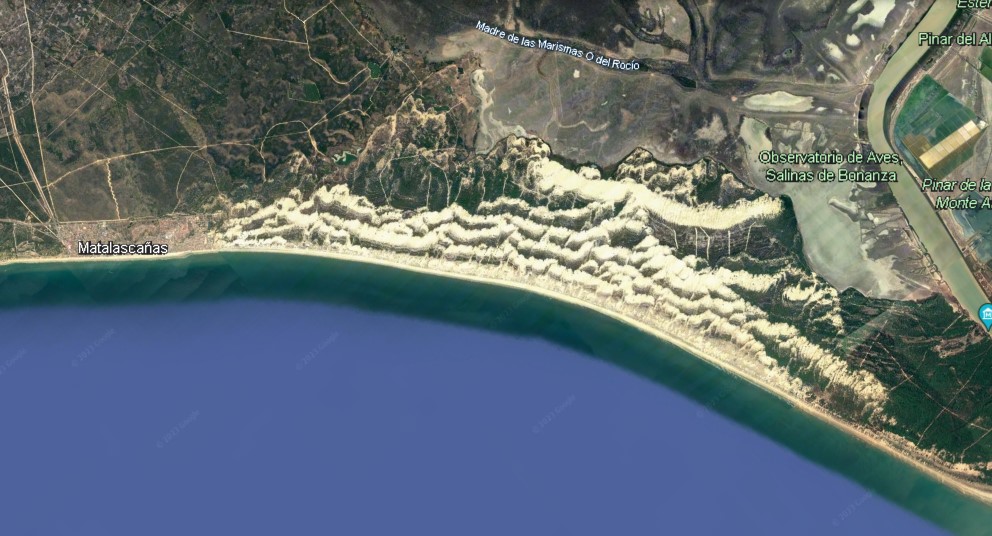
Row of dunes N.P. Doñana
The next ecosystem that shows us the diversity of Doñana’s ecosystems, due to proximity, are the dunes; with a close alliance between wind and sand, this ecosystem is formed over thousands of years. It is a dune system (row of dunes) that is carried by the action of the wind towards the interior of the park. The first, mobile dunes, are only retained and formed by the plant like spiny thrift Armeria pungens, helichrysum Helichrysum picardii and other species, some already mentioned above, that mold the landscape. Once we have passed this line, we reach the next dune range where species such as cade juniper Juniperus oxycedrus subsp. macrocarpa or Stone pine Pinus pinea are present. The latter forms part of the interior landscape and the dune corrals, leaving behind the passage of the dune the so-called Doñana crosses or field of crosses.
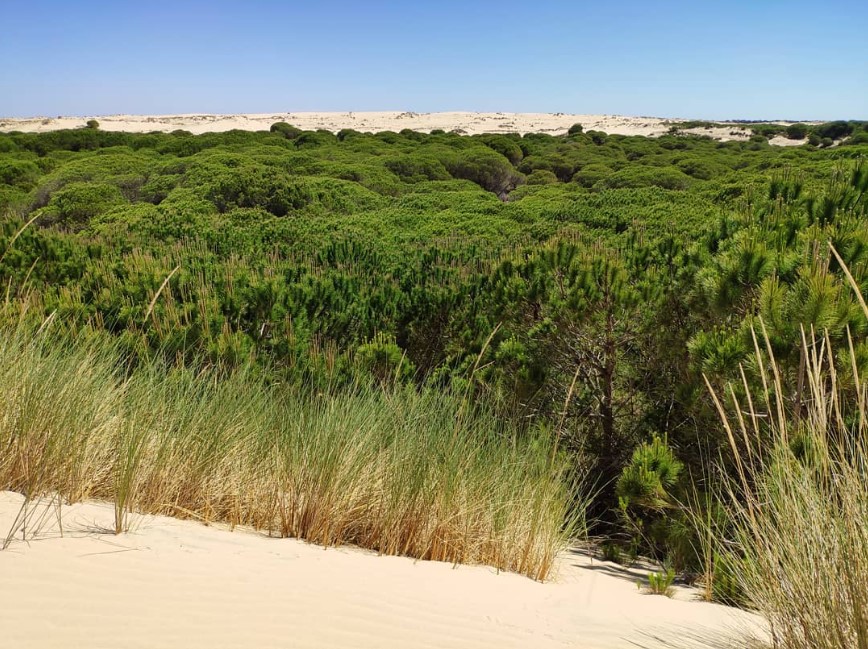
Corral dune N.P. Donana
This ecosystem gives way to the next: the marshes. But first, as a result of the union of marshes and dunes, the vera is born. La vera is not considered an ecosystem of Doñana, it is even more ephemeral. It is an ecotone, the ecotone is born by the emergence of groundwater, given the limit between clays and sands of the soil layer. This area has incredible biodiversity and is of vital importance for the local wildlife, as it sometimes acts as a watering hole when water is scarce for herbivores and as a camping area for carnivores.
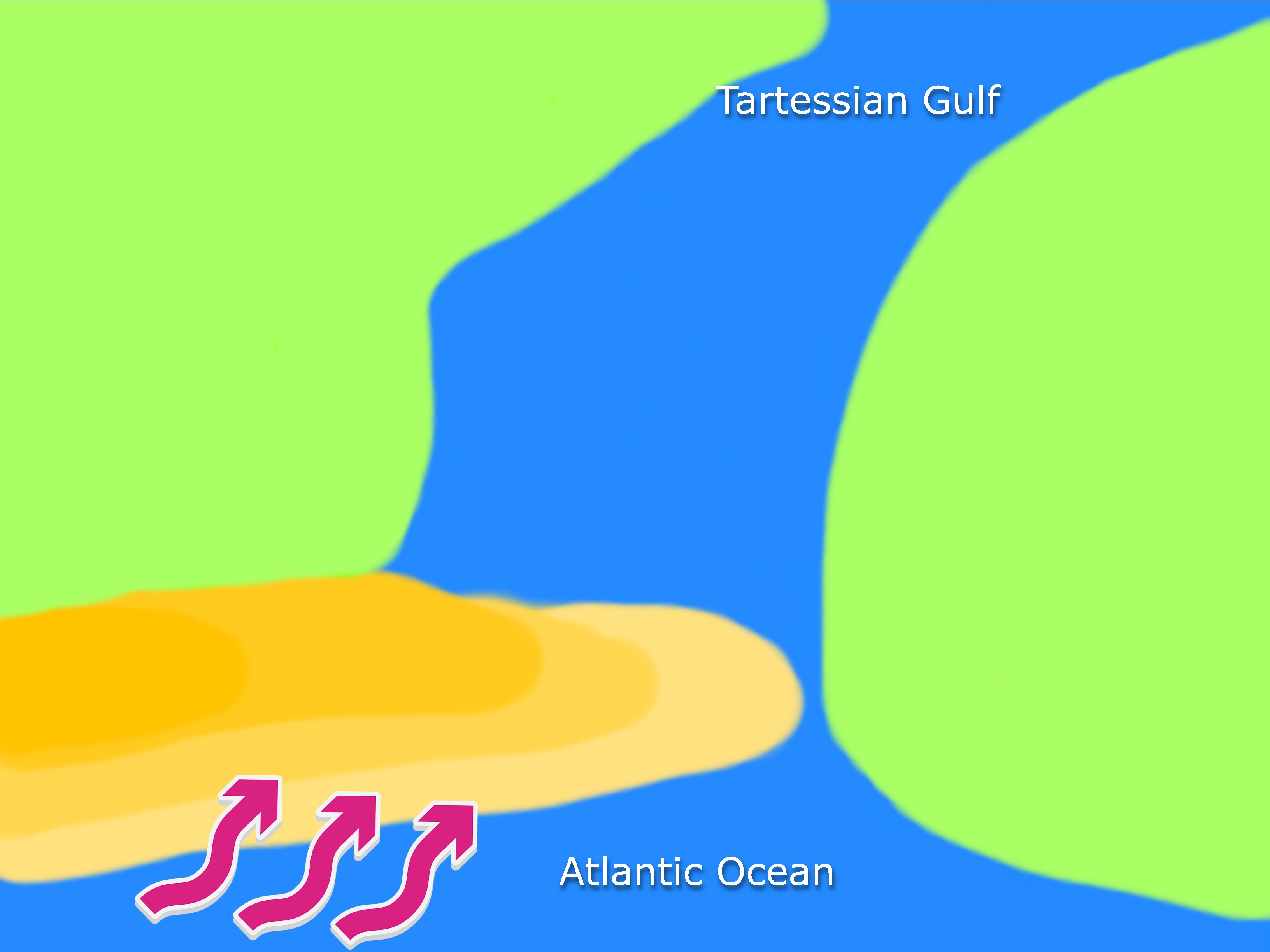
Tsunami incidence direction
And now, the marsh. The image of the diversity of Doñana’s ecosystems, young, born from tsunamis and made from large floods that were silted up, depositing sediments and closing the ancient lacus ligustinus, an ancient Roman lake. Little by little, the Doñana that we know today will appear, one of the reasons for the greatness and diversity of Doñana’s ecosystems: The birds. Herons, egrets, eagles, bitterns, flamingos, stilts and almost 100 species only in the Doñana marshes; makes this site ideal for birdwatching.

Finally, The “coto” or the forest. Historical area of use, religious worship and tradition. It is also the area where the king of Doñana is found, the Iberian lynx, this being that has been brought to the brink of extinction and rescued after a long process that continues to this day. One of his “noble titles” is being an “umbrella species”; This means saving countless species since a large amount of land is necessary for their conservation and, therefore, all the diversity of the Doñana’s ecosystems found there will also be protected. Trees, lizards, insects and birds could be said to be protected thanks to the Iberian lynx.

Iberian lynx Lynx pardinus
Those are some of the values and knowledge that we transmit at DoñanaTour.
Thank you and until our next tour with DoñanaTour!
Information sources:
- https://www.miteco.gob.es/es/parques-nacionales-oapn/red-parques-nacionales/parques-nacionales/donana/valores-naturales/ecosistemas.html
- https://www.miteco.gob.es/es/parques-nacionales-oapn/red-parques-nacionales/parques-nacionales/donana/visita-virtual/fauna.html
- https://bibdigital.rjb.csic.es/records/item/13063-flora-vascular-de-andalucia-occidental?offset=1
Leave a Reply